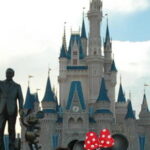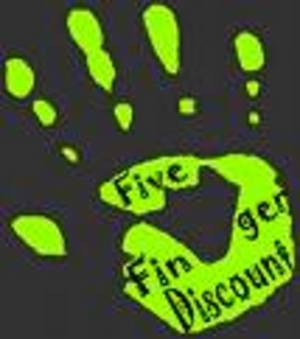Overview of the Walt Disney Company
Kristen Shuttleworth
Media Management
Fall 2007
Robert Morris University
Introduction and Research Methods
My first conscious memories of life are of standing with my parents and sister in line to ride “Dumbo the Flying Elephant” at Walt Disney World’s Magic Kingdom Park. Ever since, the Walt Disney Company has captivated me through its resorts, films, television programs, and familiar and lovable characters. As I grew up, I learned that Disney is far more than a theme park. The Walt Disney Company is one of the world’s largest, and most recognized media industries. I have chosen to study the Walt Disney Company because of the life long love I have for it. I wanted to learn more about the various divisions of the company that I did not previously know was associated with Disney. One of the two career paths that I am considering upon the completion of my undergraduate and graduate degrees is a position in the Walt Disney World Resort. I chose the Walt Disney Company to give me a basic knowledge of the company to recall for possible interviews, as well as research possible employment positions that would interest me in other divisions of the company.
For my research, I located several relevant ProQuest articles. I used these because they were the most convenient way to obtain scholarly articles. . It was also a convenient method to locate the most recent and up to date articles. Other articles include a newspaper articles and a SWOT analysis of the company. The second major resource I used was the Walt Disney Company website. Within the website, I was able to locate a thorough company history, the most recently published annual report, and press releases covering all divisions of the Walt Disney Company.
Historical Overview
The Walt Disney Company officially began with the distribution of a cartoon series animated by Walter Disney featuring the character “Oswald the Lucky Rabbit.” Through a legal loophole, the Disney Brothers lost creative control and property rights to Oswald, and therefore were forced to create a new cartoon icon. This was the birth of Mickey Mouse, who launched the Walt Disney Company to national prominence with the 1928 release of “Steamboat Willie”(The Walt Disney Company 2007).
In 1937, released its first full-length feature film, Snow White and the Seven Dwarves. This release made the Walt Disney Company an international icon as it astounded the world with the first ever full-length animated feature. This was the first in a long line of successful animated films. In 1950, the Walt Disney Company released its first live action film Treasure Island. The company expanded to television with the 1954 airing of the Disneyland Series. In Walt Disney was inspired to create a family destination based on the lands and characters featured in his movies and cartoons. Disneyland opened the same year in Anaheim, California. Walt Disney died in 1966, but was succeeded by his brother Roy, who opened Walt Disney World in Orlando, Florida in 1971. Later parks would open after Roy’s death including Tokyo Disneyland (1983), Disneyland Paris (1992), and Hong Kong Disneyland (2005). These parks have expanded to include additional theme parks, hotels, entertainment districts, and recreation (The Walt Disney Company 2007).
The Disney Channel was launched in 1983, as was Touchtone Pictures, thus expanding the Disney media empire. The decade also led to expansions through the development of Disney’s Hollywood Records Hyperion Book Publishing.
The 1990’s took Disney to Broadway with the opening of Disney’s Beauty and the Beast, The Lion King, and Aida. Disney furthered its influence through the mergers with Pixar Animation and ABC Television. Disney travel was also expanded through the opening of Disney Cruise Line, and in 2006, Adventures by Disney (The Walt Disney Company 2007).
In October 2005, long running CEO Michael Eisner was replaced by Robert Iger who has begun in his short time as Disney headman to radically change the direction of the Walt Disney Company.
Organizational Structure
There are four main divisions to the Walt Disney Company. These divisions include media networks, parks and resorts, studio entertainment, and consumer products. The media networks division is concerned with the television and radio properties within the company (Datamonitor 2007). These include Radio Disney, ABC Television, ESPN, Disney Channel and these channels’ affiliates.
The parks and resorts division is responsible for entertainment facilities within the United States including the Walt Disney World Resort, the Disneyland Resort, the Disney Cruise Line, and ESPN Zones (Datamonitor 2007).
The studio entertainment division is responsible for the production and distribution of animated and live action films (Datamonitor 2007). These companies include Disney-Pixar, Touchstone Pictures, Miramax Pictures, Buena Vista Home Entertainment, and Buena Vista Motion Pictures (The Walt Disney Company 2007). It also is responsible for musical recordings and Broadway productions (Datamonitor 2007).
Lastly, the consumer products division is responsible for licensing of Disney characters to manufacturers, publishers, and retailers. This is used to promote and sell various items of merchandise featuring Disney characters to the public (Datamonitor 2007).
The Walt Disney Company is united by a central CEO and President. These positions are currently held by Robert Iger. Iger is mostly responsible for ensuring smooth relations and operations between the multitudes of branches that make up the Walt Disney Company. He is also responsible for company public image (The Walt Disney Company 2007).
Disney’s management is primarily split into two units. These units are Corporate and Business Units. Corporate management is management within the overall Walt Disney Company while Business Units deal with the individual branches of the Walt Disney Company. Studying the corporate structure of management gives a general overview of how management works throughout the company.
Alan Braverman is the Senior Executive Vice President, General Counsel and Secretary of the Walt Disney Company. He is primarily responsible for the legal officer of the company. Wes Coleman is the Walt Disney Company’s Executive Vice President and Chief Human Resources Officer. He is in charge of a multitude of responsibilities including global staffing, employee relations, compensation and benefits, cultural development, and diversity. The Walt Disney Company is also guided and influenced by a board of directors comprised of twelve members of various educational and professional backgrounds (The Walt Disney Company 2007).
Products and Services
Disney’s products and services can best be described by breaking them down into the four major categories of management that exists within the Walt Disney Company.
The media network has two major services. These include broadcasting and cable. Disney owns and operates the ABC Television broadcasting network. This station provides news and entertainment and features hit shows such as Grey’s Anatomy, Lost, Desperate Housewives, All My Children, Good Morning America, and Jimmy Kimmel Live. The cable division offers a variety of channels with various programming for all ages. These channels include The Disney Channel, Lifetime Entertainment, ESPN, ABC Family, SOAPNet, Jetix, A&E; Television and others (The Walt Disney Company 2007).
Disney also broadcasts Disney Radio and ESPN Radio.
The parks and resorts segment offers a wide variety of entertainment resorts and facilities around the country. The largest of these is the Walt Disney World resort that is home to four theme parks, three water parks, a downtown entertainment district and over twenty resort hotels. The Disneyland Resort in Anaheim, California is home to two theme parks, a downtown district and three themed hotels. Other travel services include the Disney Cruise Line, and The Disney Vacation Club, Disney’s timeshare property ownership program. The newest addition to Disney’s parks and resorts is the new branch of themed, all-inclusive vacations, Adventures by Disney.
The studio entertainment division offers consumers with animated, computer animated, and live action motion pictures through a variety of film affiliates. These include Miramax, Touchstone, Disney-Pixar, Buena Vista, as well as the Walt Disney Company’s recording and music distribution company, Buena Vista Music Group. This sector also provides live entertainment such as Disney’s Broadway openings of Beauty and the Beast, The Lion King, Tarzan, Aida, and the newest openings of Mary Poppins and The Little Mermaid. Live entertainment also includes Disney’s widely popular, Disney on Ice and Disney Live! performances (The Walt Disney Company Annual Report 2006).
Disney consumer products offer a huge variety of merchandise ranging from bedding, home décor, clothing, toys, and gaming featuring Disney characters from movies and television. Popular franchisees within consumer products include Pirates of the Caribbean, Cars, and Power Rangers (The Walt Disney Annual Report 2006).
Financial Performance
The Walt Disney Company has been consistently succeeding and improving its financial performance over the past five years. The chart below displays the revenue of each major division of the Walt Disney Company from 2002 to 2006.
Revenue (In Millions)
2002
2003
2004
2005
2006
Media Networks
$ 9,733
$10,941
$11,778
$13,207
$14,638
Parks and Resorts
$ 6,465
$ 6,412
$ 7,750
$ 9,023
$9,925
Studio Entertainment
$ 6,691
$ 7,364
$ 8,713
$ 7,587
$ 7,529
Consumer Products
$ 2,440
$ 2,344
$ 2,511
$ 2,127
$ 2,193
Total
$25,329
$27,061
$30,752
$31,944
$34,285
•
Chart Taken From The Walt Disney Company 2006 Annual Report
Shareholder earnings have also steadily increased over the past four years, which is the sign of financial progress that most of the general public is concerned about. Shareholder earnings have increased from $.60 in 2002 to $1.64 per share in 2006. Revenue and profit growth have been credited to several factors including several hit movies such as, The Pirates of the Caribbean: The Curse of the Black Pearl, The Pirates of the Caribbean: Dead Mans Chest, The Chronicles of Narnia: The Lion, The Witch, and The Wardrobe, and Cars. The eighteen-month, internationally celebrated promotion commemorating Disneyland’s 50th Anniversary increased park attendance nationwide. Hit shows on ABC Television such as Lost, Grey’s Anatomy, and Desperate Housewives have also contributed to the Walt Disney Company’s continued financial success (Walt Disney Company Annual Report 2006).
Goals and Plans
The goals and plans for the Walt Disney Company have changed dramatically since Robert Iger’s takeover of the company in 2005. One goal is to expand the company’s international influence and profit. In a press release given on June 20, 2007, Robert Iger unveiled his plan to accomplish this goal through a company wide motion to unite the various branches of the Disney Company together under a more unified leadership. Iger hopes that this will help foster a smooth line of efficient communication allowing for more productivity and a wider distribution of products and services (Disney Corporate 2007).
The plan would mostly involve a merger between Disney-ABC Worldwide Television and Walt Disney Studios. This plan was previously implemented on a smaller scale that united the Disney Channel, ABC, and ESPN under a single marketing affiliate (Chmielewski 2007).
Another goal that the Walt Disney Company is aiming for is the utilization of breaking technologies to make its products and services more available. Within the first two weeks of Iger’s promotion to Disney CEO, an agreement was made with Apple Inc. to allow the sale and downloading of Disney’s ABC television programming on iTunes. This allowed millions to access the latest episode of their favorite shows on their iPods or on their computer Other technologies that Iger is tapping into involves distributing Disney films in high definition and Blu-Ray disc, offering Disney on On-Demand television, and other forms of computer access to movies and music (Gunther and Hajim 2007).
Another plan for the Walt Disney Company comes in the form of Iger’s management style. Iger hopes to manage the company in a way that promotes individual creativity and responsibility. He wishes to empower current employees, or as they are called in the Disney Company, cast members, to create, innovate and carry out their own ideas for the company. He is opening the company up to a more hands-on approach where anyone can create a winning idea. Previous CEO, Michael Eisner was known for quickly squashing ideas, which intimidated many in the company. Iger hopes to reverse this effect and make the Walt Disney Company a home for creativity and imagination to further Disney’s products and services (LePort, Hayes, and Fritz 2007).
Public Relations
The Walt Disney Company primarily handles public relations through its website, its products and services, and its annual report.
The website is the primary source for public relations. The company goals and responsibilities can be found in the “Corporate Information” link on Disney’s main website. The site outlines six guidelines for corporate responsibility. These include business standards and ethics, corporate governance, community, Disney’s Enviromentality, international labor standards, and safety and security. These are the core values of the company that each cast member is expected to demonstrate in their business relationships. This demonstrates the type of company that Disney is, how it carries business, and the image it wishes to portray to consumers. News releases are also posted on the website to update readers on breaking news events, or inside information regarding the various aspects of the Walt Disney Company.
The products and services that Disney produces are in reflection of the Walt Disney Company’s goals. One of the main focuses of the Disney Company is that of believing in your dreams. This is an idea that the company carries out not only in its products, but in its employees as well. This concept, as well as many of the other five guidelines of corporate responsibility is found in Disney movies, television, and theme parks.
Another means of public relations is the annual report. This report, which covers an entire financial year, not only gives financial figures and information, it also informs readers about new products and services, upcoming plans and goals, and company information such as history, company description, and management structure.
Works Cited
Chmielewski, D. (2007, June 20). Disney to form new unit to distribute shows
worldwide. Los Angeles Times, p. C2. Retrieved December 6, 2007, from
ProQuest database.
Datamonitor. (2007, May 4). The Walt Disney Company Company Profile. Retrieved
December 5, 2007, from ProQuest database.
Disney Corporate. (2007). News Releases. In Disney Corporate. Retrieved December 6,
2007, from http://corporate.disney.go.com/news/corporate/2007/index0.html.
Gunther, M., & Hajim, C. (2007, January 23). The Iger Sanction. Fortune, 153(1), 32-34.
Retrieved December 1, 2007, from ProQuest database.
LaPorte, N., Hayes, D., & Fritz, B. (2007, February 26). Mouse House Makeover.
Variety, 406 (2), 1-46. Retrieved December 9, 2007, From Film and Television
Literature Index database.
The Walt Disney Company. (2007).Corporate Information. Retrieved December 5, 2007,
from http://corporate.disney.go.com/corporate/complete_history.html.
The Walt Disney Company. (2006). The Walt Disney Company Annual
Report. Retrieved December 1, 2007, from
http://corporate.disney.go.com/investors/annual_reports/2006/ index.html






